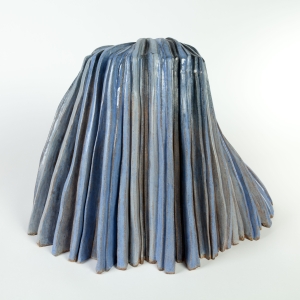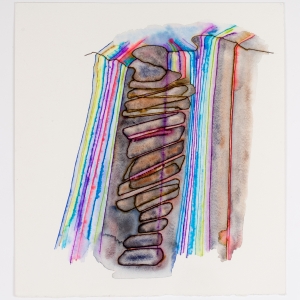Guggenheim Fellow and Alum Katy Schimert Catches Up with UArts
May 5, 2020
When 2020 Guggenheim Fellowship recipient Katy Schimert BFA ’85 (Fine Arts/Sculpture) attended Philadelphia College of Art (PCA), now University of the Arts, she was exposed to an instructional and cultural climate that would inform her work throughout her life. Now in its 96th year, the Guggenheim Fellowship remains one of the most prestigious awards for artists and scholars in the humanities and sciences. In Schimert’s own words, the interdisciplinary nature of the department allowed her to “move from drawing into sculpture and back again,” which she says “was really the foundation” for her career. UArts spoke with Schimert about her time at PCA, the evolution of art education and her advice to students.
stoneware by Schimert
During Schimert’s time at PCA, a conversation about women in art had begun to gain momentum among students. “At the time, professors didn’t really talk about art made by women in a formal way,” Schimert recounted. She cited the influence of PCA’s women faculty members such as Cynthia Carlson and Ree Morton. Morton was a particular inspiration to Schimert, though Morton had taught at PCA before Schimert was a student, the memory of her presence persisted.
The desire for more representation for women in art education inspired Schimert and her friends to invite women artists like Jackie Winsor to visit campus. “Student-to-student contact is, in many ways, equally as important as anything a faculty member might tell you,” she commented.
As a professor at the Rhode Island School of Design (RISD), Schimert said “I tell my students that they have to find a way to move beyond whatever it is that I say and really challenge it and make it their own.”
on paper by Schimert
Feminist art often focuses on personal struggles that impact women, using art as the medium of expressing these ideas. Although Schimert’s interest in feminism showed her the importance of personal expression in art, she cautioned students not to rely solely on the personal. She noted that in moments like now, in the pandemic crisis, students can look back on artists throughout history who have created in times of isolation. Schimert said, “If you can find a way to connect to somebody from the past, it can give you a larger sense of what it means to make a connection through art to another person.”
Schimert is an expert at combining both the personal and conceptual. The Guggenheim Foundation cited Schimert’s use of “fragments of personal experience” as characteristic of her work. “I think you have to take personal experience and form it into a visual language that communicates,” she said. “The personal becomes part of the art object and perhaps exists in two places between experience and expression.”
Schimert’s work across mediums has been displayed in museums across the country, most recently in the University Museum of Contemporary Art at University of Massachusetts, Amherst; Whitney Museum of American Art, New York; and Moody Center for the Arts, Houston. Schimert is also an associate professor of ceramics at Rhode Island School of Design. Additionally, she was a 2020 Joan Mitchell Center Artist-in Residence. “It’s just a real honor to be recognized, especially later,” she said of her Guggenheim award. “I’m coming up on 25 to 30 years of working, so it’s nice to be recognized now.”







